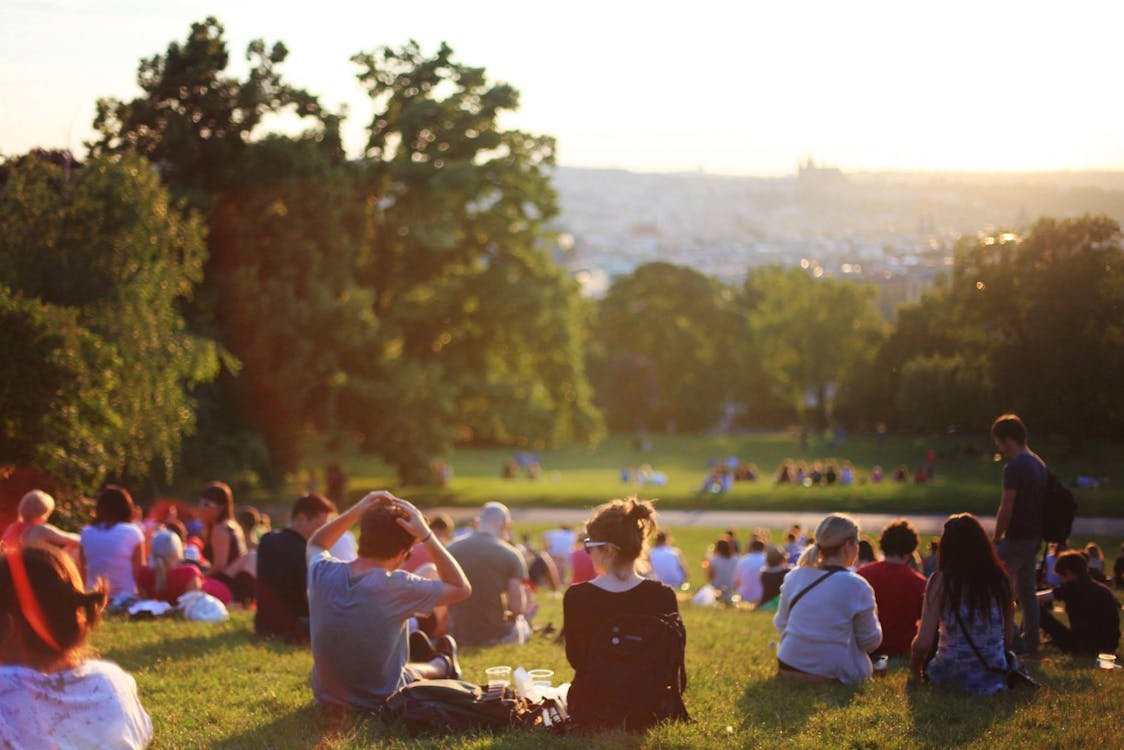Throughout the annals of human existence, cities have perennially stood as the vibrant epicenters of bustling activity. Yet, as these urbanized domains persist in their ceaseless expansion, the dire necessity for verdant havens and sustainable practices becomes ever more imperative. In a valiant response to this pressing challenge, the advent of pop-up parks has emerged as an ingenious and unconventional solution, heralding an era of urban transformation and regeneration. These ephemeral oases of lush greenery not only serve as idyllic recreational spaces for denizens of the metropolis but also serve as catalysts for environmental consciousness, instilling within the collective consciousness a profound reverence for our delicate ecosystem. Moreover, these magnificent ephemeral sanctuaries serve as conduits for community engagement, fostering a sense of camaraderie and shared responsibility among city dwellers.
Let's unravel the captivating tapestry of sustainable pop-up parks, delving deep into the ingenious eco-friendly strategies harnessed to metamorphose our urban landscapes into ethereal domains of harmonious coexistence.
The Rise of Sustainable Pop-Up Parks
Pop-up parks, more colloquially referred to as temporary or interim parks, have garnered substantial admiration and recognition in recent years, emerging as resplendent conduits for the metamorphosis of neglected and underutilized spaces into green spaces. These parks are typically created in vacant lots, parking spaces, or even on rooftops, breathing life into neglected areas and reimagining the urban landscape. What sets sustainable pop-up parks apart is their commitment to environmental sustainability and their potential for long-term positive impact. Here are other key features that make them unique:
- Repurposing and Reclaiming Spaces: Sustainable pop-up parks are highly proficient in revitalizing neglected areas. By repurposing vacant lots or underutilized spaces, these parks breathe new life into once-forgotten corners, transforming them into bustling community hubs. This strategy not only enhances the aesthetic appeal of the city but also mitigates urban decay, fostering safer and more dynamic neighborhoods.
- Low-Impact Design: By utilizing permeable surfaces like gravel or permeable pavers, these parks enable rainwater to seep into the ground, thereby decreasing stormwater runoff and alleviating pressure on municipal drainage systems. Moreover, the integration of native plants and drought-tolerant vegetation helps conserve water resources while promoting local biodiversity.
- Temporary and Modular Infrastructure: The inherent transient nature of pop-up parks offers a great deal of flexibility and adaptability. Instead of relying on permanent structures, these parks utilize temporary and modular infrastructure, such as repurposed shipping containers or mobile seating units, to create versatile spaces. These elements can be conveniently dismantled, moved, or repurposed, maximizing resource efficiency and minimizing waste generation.
- Sustainable Materials and Practices: From material selection to the adoption of sustainable practices, every facet of pop-up park construction is geared towards minimizing environmental footprint. By utilizing reclaimed or recycled materials like salvaged wood or repurposed tires, the parks reduce the need for new resources and embrace the principles of a circular economy. Additionally, sustainable practices such as composting and waste separation promote responsible waste management not only within the park but also in the surrounding community.
- Community Engagement and Education: Sustainable pop-up parks act as catalysts for fostering community engagement and promoting environmental education. They serve as dynamic platforms for hosting workshops, events, and educational programs that aim to raise awareness about sustainable practices, biodiversity conservation, and the significance of green spaces in urban settings. By nurturing a sense of ownership and encouraging active participation, these parks empower communities to take responsibility for their local environment and inspire sustainable behaviors that extend beyond the park's boundaries.
The Benefits of Sustainable Pop-Up Parks
- Improved Physical and Mental Well-being: The positive impact of green spaces on physical and mental well-being has been well-documented. Sustainable pop-up parks offer urban residents the chance to engage in recreational activities, exercise, and find moments of relaxation. By providing these opportunities, these parks actively promote a healthier lifestyle and contribute to the reduction of stress levels among individuals living in urban areas.
- Climate Resilience: The eco-friendly strategies implemented in sustainable pop-up parks play a significant role in enhancing climate resilience. Through the integration of green infrastructure elements like rain gardens or green roofs, these parks effectively address the urban heat island effect, enhance air quality, and mitigate the risk of flooding. These tactics contribute to the overall sustainability and adaptability of urban environments in the face of climate change.
- Social Cohesion and Sense of Belonging: Pop-up parks foster social connections and a sense of belonging among community members. By encouraging communal activities and shared experiences, these spaces strengthen social bonds and build stronger, more cohesive neighborhoods.
- Economic Revitalization: The transformation of underutilized spaces into vibrant pop-up parks can have positive economic impacts. These parks attract visitors, stimulate local businesses, and revitalize neighborhoods, contributing to economic growth and prosperity.



.jpg)
.jpg)
.jpg)
.jpg)

